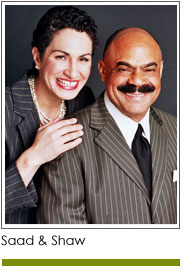 While New Year’s celebrations are nothing but a memory now, it was not that long ago that many of us were creating personal and professional goals and plans. But the weeks have passed and it is time to ask – what has happened since January 1st – especially as it relates to your nonprofit fundraising.
While New Year’s celebrations are nothing but a memory now, it was not that long ago that many of us were creating personal and professional goals and plans. But the weeks have passed and it is time to ask – what has happened since January 1st – especially as it relates to your nonprofit fundraising.
A fundraising plan is one of the best ways to set goals, gain buy-in from others, and raise the money your nonprofit needs. Your plan can be simple or complex, depending upon the complexity of your organization, your fundraising goals, and your organization’s culture and history of fundraising. Here are three things to consider as you build your plan.
First, you need to know your fundraising goal. How much money does your organization need to raise? Ideally your budget is developed as a team effort with information solicited from both staff and board leadership. It should reflect realistic revenue and cost projections and include funds for the work of fundraising. Once the budget is approved by the board it is the responsibility of the board and staff to ensure that revenue projections are met. Let’s say that again: it is the responsibility of board and staff to ensure revenue goals are met.
So, set your fundraising goal with a measure of sobriety. You can’t expect a staff member or board member to magically come up with the money. Everyone needs to be involved, and a fundraising plan is one way that all parties can come together to reach agreement on how much needs to be raised, who the prospective donors and funders are, what processes will be used to identify new potential funders, and who will be responsible for what by when.
You also want to include an initial version of the case for support. This is a document that communicates why individuals, foundations, corporations, and/or government agencies should financially support your organization. It includes your history, current goals and objectives, current and projected programs and populations served, and an overview of funding needed to meet the goals and objectives. This document can be prepared as a “deck” or PowerPoint or as a brochure. This is a marketing piece – not a literary one – it should be clear, concise and compelling, communicating what your organization is raising money for and why.
Finally, you want to define your campaign structure. This is an organization chart that communicates how people from within the organization – and others – can be involved in fundraising. Ideally you will have a volunteer campaign chair (or co-chairs) and “division leaders” who build teams that are focused on each of the sources from which you seek funding. For example, you may want a foundation division, corporate division, major donor division, special events division, and/or an online fundraising division.
Here's the bottom line: no one person can ensure an organization’s financial goals are met. It takes a well-orchestrated team and there is no better time than now to come together and plan for your fundraising success. Take a small step each day; begin new practices; record them; be brave; ask others to help you.
We’ll share more in part two.
Copyright 2021
Mel and Pearl Shaw of Saad&Shaw – Comprehensive Fund Development Services. Let us help you plan for 2021 Video and phone conferencing services always available. Call us at (901) 522-8727. www.saadandshaw.com.
Part one of a two-part series on planning for 2021.














